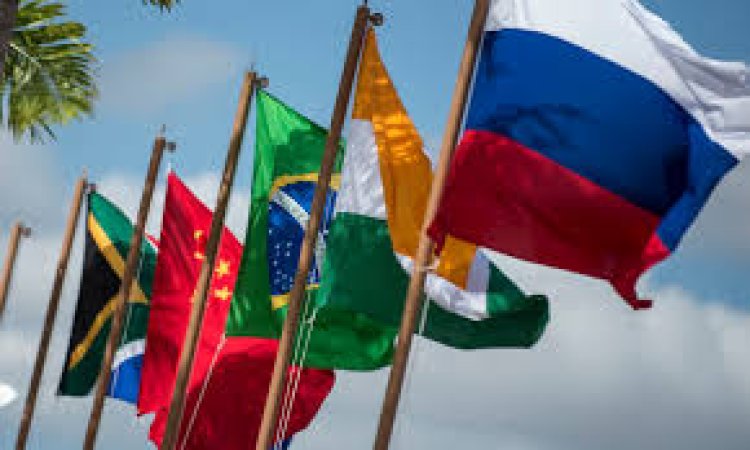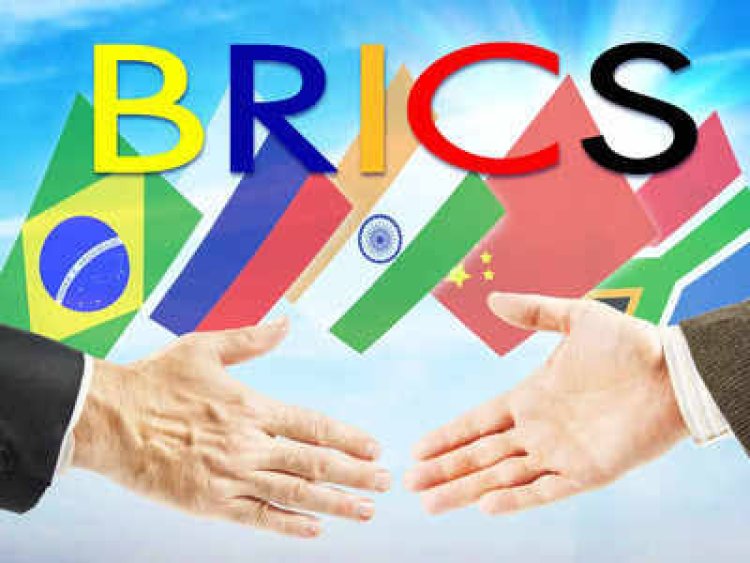BRICS group is poised for a strong rise.. Will it threaten the luster of the Big 7?

This month, BRICS group will hold its 15th summit in Johannesburg, and this will be the first time that the leaders of its countries have met in person since the Corona pandemic.
The leaders of China, Russia, Brazil, India and South Africa will meet to discuss issues, most notably the expansion of the group and economic relations, amid expectations that it will turn into an alternative to major economic blocs such as the Group of 7.

The number of group members is expected to increase
The summit is expected to be attended by the presidents of China, South Africa, Brazil and the Prime Minister of India. Russian President Vladimir Putin will be absent due to his prosecution by the International Criminal Court on charges related to the Ukraine war. Putin will be represented by his Foreign Minister Sergey Lavrov.
South Africa extended invitations to 67 leaders in Africa, Latin America, the Caribbean and Asia to attend the summit, which will be held from August 22 to 24, as well as to the Chairperson of the African Union Commission and the Secretary-General of the United Nations.
According to a statement by the South African Ministry of Foreign Affairs, this month, 40 or more countries around the world have expressed interest in joining or cooperating with BRICS, and 23 of them have applied for membership in the group that represents 42% of the world's population and 40% of the world's area.

BRICS reflects the strength of the global south
The group that held its first official summit in 2009 was named “BRIC”, which is the first alphabet of the founding countries in Latin, and its name changed to BRICS with South Africa joining it in 2010. The group presented itself to the world as a representative of the countries of the Global South, in a world Bipolar.
South Africa's ambassador to the BRICS group, Anil Soklal, said in a statement in mid-July that the influence of the global south is escalating and the group must be seen as representing the world of the future, and enjoying economic and geopolitical strength that qualifies it to lead change for the better, according to TASS agency.
Attempts to reduce American hegemony
The 5 BRICS members, despite the existence of deep differences between them and historical political tensions such as the border dispute between China and India, believe that it is necessary to reduce the dominance of the United States in world politics and economy, and to shift towards a general multipolarity, according to a recent report by The Economist.
And as part of the BRICS efforts to counter the dominance of the US dollar, it established in 2014 the New Development Bank to serve as an alternative to organizations such as the World Bank and the International Monetary Fund, and to support the currencies of member states.
Despite the fact that the assets of this bank do not exceed one-tenth of the total assets of the World Bank, it still represents an attempt to break the dominance of the dollar, as part of several arrangements for these countries, most notably increasing their trade exchanges globally in their national currencies.

BRICS is poised for a strong rise
The International Monetary Fund expects the BRICS countries’ contribution to the size of the global economy to rise this year to $56 trillion, compared to a GDP, according to purchasing power parity, of about $52 trillion for the Group of 7.
An analysis of the American company Kearney, which specializes in economic research, expected that Asia and Australia would continue to lead global growth over the next 5 years, with an average of 4.2%, and that China would maintain the position of the second largest economy in the world, and that India would become the fourth by 2027, advanced two ranks, and that Brazil would advance. Rank one to eighth.
Kearney's analysis suggested that the gap between the United States and its runner-up, China, among the world's largest economies, would decrease within 5 years, bringing the size of China's economy to $20.5 trillion, compared to $22.6 trillion for the United States.

BRICS against the Group of 7
The Group of 7, which held its first meeting in 1975 and includes the major industrial countries, the United States, Germany, Britain, Italy, Japan, Canada and France, still controls a larger share of the global economy, as well as enjoying greater political influence compared to the BRICS countries, but this reality is likely to undergo a strong transformation over the years. upcoming, according to the Vision Capitalist network.
Looking at the evolution of the G-7 contribution to global GDP, according to purchasing power parity in 1992, we find that its share was about 46%, then it declined to 32.8% in 2012, and 30.3% in 2022. In contrast, the contribution of the BRICS countries rose to 31.7%. % in the last world, up from 28.3% in 2012.


 Shrouq
Shrouq 












